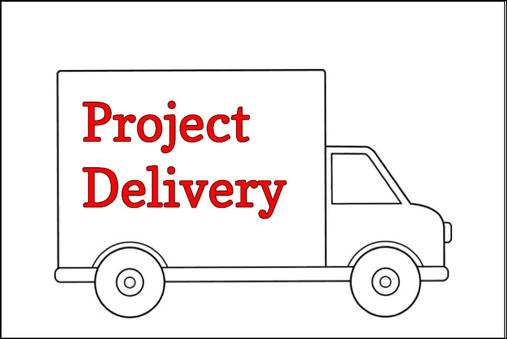|
A year after I started my own firm, I was invited to design a hangar for my Dad's golfing buddy, who happened to have started an airline that was growing by leaps and bounds. We designed projects for his airline for about twenty years until they were bought out by one of the major airlines. One of the main skills that allowed us to keep up with their growth was my knowledge of project delivery methods - mostly book-learning, driven by interest. That first project quickly grew into a hangar / office building to house the whole airline, then just three of the seven departments because all seven wouldn't fit - and it was taking too long to peg what they really needed. So we pre-bid the site work, which included a lot of paving for aircraft. Then we bid-out a Pre-Engineered Metal Building for the hangar shell. Finally, the construction was contracted on a Cost-Plus basis for doing the work. Everything went smoothly. If I had been stuck, comfort-wise, with the traditional Design-Bid-Build approach, we would have been passed over for the hangar addition that we started designing 6 months later. For this same client we used Bridging to get a hangar built in Florida; we used cost-plus-a-fee for a major remodeling; and we used Construction Management with the CM as Constructor (at risk) for their corporate aircraft hangar. Over and over, being able to guide the construction phase in the right direction was critical. That was the longest run we had with a client. I've posted four brief articles about Project Delivery Methods that you can check out below. Then I will wrap up with some PROs and CONs on the different choices available to you. BTW there are standard AIA contracts for all of these options. This is far too critical for inventing your own contracts, but sometimes the Project Delivery Method isn't exactly what the AIA agreement envisions.
Now for some PROs and CONs for your consideration. DESIGN-BID-BUILD PROs - This approach is the traditional way to go. Everybody gets it. Design it. Bid it. Build it. If you are good at estimating and turn out a tight set of documents, this works very well. It is simple. CONs - This approach is the slowest method, which is usually the main motivation to look elsewhere. If your estimates are often wide of the mark, and your documents are loose, this method can come back to haunt you over construction cost issues. FAST TRACK PROs - The name says it all. All the options that follow are contractural variations on the concept of speeding things up. Generally Fast Track benefits the client. You can be the hero by introducing the concept. CONs - The architect in charge of design has to be experienced. Because you start building before you are finished designing there are many more ways to screw up. This needs to be discussed with the client because some kind of extra cost is almost guaranteed. Contingency, anyone? DESIGN / BUILD PROs - The client almost always likes the sound of one entity responsible for everything - one point of contact. Design/Build projects are usually simpler to design because less documentation is required. The architect's risk is reduced if he is working for the contractor (the usual relationship). Our Design/Build projects have always been profitable. CONs - The architect is usually working for the contractor. This means less control over just about everything. This includes the relationship with the client. COST PLUS PROs - This type of contract gives the architect control over the project schedule by virtue of releasing documents as they are completed. CONs - Be careful of the extra work required by planning and releasing multiple bid packages and by phasing the permits. CONSTRUCTION MANAGER AS CONSTRUCTOR PROs - The CM is on-board quite early. The client can get a guaranteed maximum price when Design Development is complete. Otherwise similar to Cost Plus. If you welcome the expertise of the CM, this is a formal way of achieving that. CONs - Similar to Cost Plus. The guaranteed maximum price gives the CM a lot more control than with Cost Plus. CONSTRUCTION MANAGER AS CONSULTANT PROs - The CM is on-board quite early. Similar to Cost Plus. If you welcome the expertise of the CM, this is a formal way of achieving that. In many cases, the architect can act as the CM, which has the major benefits of control and of profitability with little more risk than Design-Bid-Build. CONs - The CM is in control of the cost and will question just about everything. Only a very sophisticated CM will do this in a timely manner. BRIDGING PROs - The client's architect has a lot of design control, but very little responsibility since there will be different 'architect of record'. Easy to handle out-of-town projects this way, and projects that have complex features. CONs - The lack of familiarity by everyone is the main disadvantage. WRAP UP I think familiarity with Project Delivery Methods creates opportunities for you to provide quality service. Service that stands out in the client's view as a type of problem-solving. It isn't very difficult to become knowledgeable about Project Delivery Methods. As you can see above, there are just a handful of contracts that you need to be familiar with. Build that familiarity and confidence will follow. I think this is a great way to 'add value'. If you would like articles like this delivered to you by email, Sign Up here. Follow on Twitter @Architekwiki ### Comments are closed.
|
x
Archives
February 2024
Categories
All
|
Architekwiki | Architect's Resource | Greater Cincinnati
© 2012-2022 Architekwiki
© 2012-2022 Architekwiki








